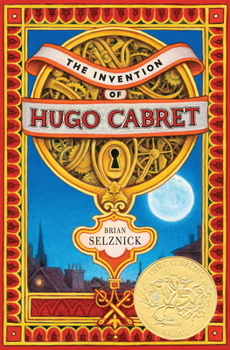The Invention of Hugo Cabret
Select Format
Select Condition 
Book Overview
Don't miss Selznick's other novels in words and pictures, Wonderstruck and The Marvels, which together with The Invention of Hugo Cabret, form an extraordinary thematic trilogy 2008 Caldecott Medal winnerThe groundbreaking debut novel from bookmaking pioneer, Brian Selznick Orphan, clock keeper, and thief, Hugo lives in the walls of a busy Paris train station, where his survival depends on secrets and anonymity...
Customer Reviews
I bought the book for my baby cousin for her birthday.
Curiouser and curiouser
Objet d'art
The Invention of Hugo Cabret Mentions in Our Blog

Book-to-screen adaptations can be a great way to inspire kids to pick up a book. Make it a family project. Read the book, watch the movie and discuss the difference between the two. Read on for 25 literature-inspired films for a range of ages.

Refrigerator art and experimental LEGO cars are proof kids have vivid imaginations, but sometimes they have ideas for ingenious things that change the world, like popsicles (age 11), the trampoline (age 16), swim flippers (age 11), and earmuffs (age 15). What would you do if your kidventor came up with a mind-bending invention that was actually viable? The parents of the kids below all answered, "Patent it, build it, and/or sell it!"






